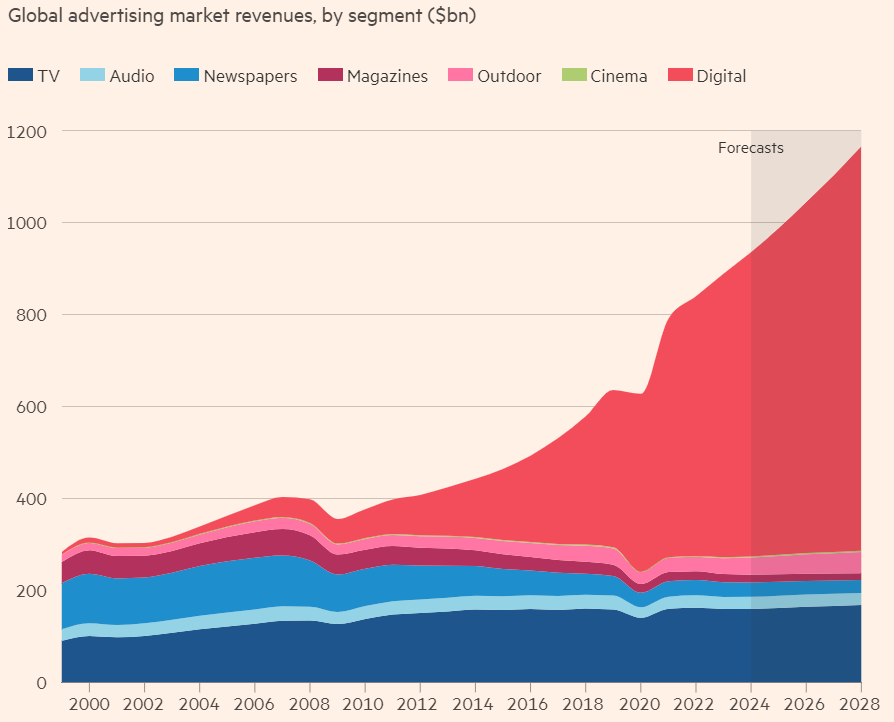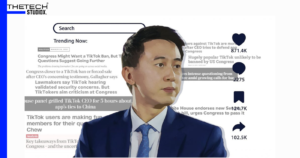Table of Contents
In the rapidly evolving landscape of advertising, artificial intelligence (AI) is emerging as a game-changer, revolutionizing the way campaigns are created, targeted, and delivered. With AI’s ability to analyze vast troves of data and personalize ads at scale, advertising giants like WPP and Publicis are investing heavily in integrating AI into their operations. However, this technological advancement is not without its challenges, as it reshapes traditional roles and confronts the industry with new competition and paradigm shifts.
The Impact of AI on Advertising
AI’s influence on advertising is profound and multifaceted. It enables hyper-personalized ads tailored to individual preferences and behaviors, leading to higher engagement and conversion rates. By harnessing AI algorithms, advertisers can optimize campaigns in real time, maximizing effectiveness and minimizing costs. Moreover, AI-powered analytics provide valuable insights into consumer behavior, helping advertisers refine their targeting strategies and improve ROI.
One of the most significant advantages of AI in advertising is its ability to automate repetitive tasks and streamline workflows. From content creation to media planning, AI-driven solutions offer efficiency gains and cost savings for advertisers. For example, AI chatbots can generate ad concepts and designs in a fraction of the time it would take human teams, allowing advertisers to produce campaigns at scale and stay ahead of the competition.
However, the rise of AI also poses challenges for the advertising industry, particularly for creatives and traditional agencies. As AI technologies become more sophisticated, there is a risk of job displacement and commoditization of creative services. The traditional role of advertising executives in crafting compelling narratives and conceptualizing campaigns may diminish as AI takes on more of these tasks autonomously.
Moreover, the dominance of tech giants like Google, Meta, and Amazon in the digital advertising space presents a formidable challenge for traditional agencies. These platforms command a significant share of ad revenue and offer advanced targeting capabilities fueled by AI and user data. As a result, traditional media owners and agencies are facing increasing pressure to adapt to the new digital landscape or risk being left behind.

The Evolution of Advertising in the Age of Tech Giants
The advertising industry is experiencing a seismic shift, grappling with the decline of traditional advertising channels such as TV and newspapers in favor of digital platforms dominated by tech behemoths like Google, Meta, ByteDance, Alibaba, and Amazon. These tech giants have emerged as the top global sellers of advertising, collectively witnessing a staggering 25.4% compound annual growth in advertising revenue from 2016 to 2022, outpacing the broader market’s 9.3% rise.
In 2023, digital advertising accounted for almost 70% of the $889 billion in global advertising revenue, a trend expected to accelerate further. GroupM, the world’s largest media buying agency, forecasts that by 2028, digital advertising on social media platforms such as TikTok and YouTube will surpass three-quarters of the market, surpassing the entire advertising industry’s size in 2022.
Despite these seismic shifts, traditional media owners, large brand advertisers, and agencies are slow to adapt to the digital transition. Media groups focused on traditional advertising formats are already feeling the impact. In the UK, television networks like ITN and Channel 4 are facing challenges, with Channel 4 announcing the reduction of 200 jobs amid what executives describe as the worst advertising market conditions since 2008.
The rapid rise of digital advertising underscores the importance of agility and adaptation in the advertising industry. As consumer behavior shifts towards digital platforms and technologies, advertisers must recalibrate their strategies to effectively reach and engage their target audiences. Traditional media channels remain relevant but must evolve to complement digital initiatives and capitalize on emerging opportunities in the digital advertising landscape.
In this era of digital transformation, success will hinge on the ability of advertisers, agencies, and media owners to embrace innovation, harness the power of data and analytics, and deliver compelling, targeted advertising experiences across digital channels. While the transition may present challenges, it also offers unprecedented opportunities for those willing to embrace change and lead the way in shaping the future of advertising.

Navigating the Challenges of AI in Advertising
Despite the challenges posed by AI, there are opportunities for advertisers to leverage this technology to their advantage. By embracing AI-driven solutions, agencies can enhance their creativity, efficiency, and effectiveness in delivering campaigns. For example, AI-powered content generation tools can assist creatives in brainstorming ideas and iterating on concepts, leading to more innovative and impactful campaigns.
Moreover, AI can help advertisers unlock new insights into consumer behavior and preferences, enabling them to tailor their messaging and targeting strategies with precision. By analyzing vast amounts of data in real-time, AI algorithms can identify patterns and trends that human analysts may overlook, providing valuable guidance for campaign optimization and decision-making.
Furthermore, AI offers opportunities for automation and scalability in advertising operations, allowing agencies to streamline processes and allocate resources more effectively. By automating repetitive tasks such as media buying and performance tracking, advertisers can free up time and resources to focus on higher-value activities, such as strategy development and creative ideation.
Conclusion: Embracing the Future of Advertising
In conclusion, the rise of AI presents both opportunities and challenges for the advertising industry. While AI technologies offer unprecedented capabilities for personalization, optimization, and automation, they also pose risks for traditional roles and business models. Advertisers must adapt to the changing landscape by embracing AI-driven solutions and innovating their approaches to campaign creation and delivery.
By harnessing the power of AI, advertisers can unlock new levels of creativity, efficiency, and effectiveness in reaching and engaging their target audiences. However, success in the AI-driven era of advertising will require agility, innovation, and a willingness to embrace change. As the industry continues to evolve, advertisers must stay ahead of the curve by leveraging AI to its fullest potential and delivering impactful campaigns that resonate with consumers.





[…] The Evolution of AI in Advertising: Opportunities and Challenges […]